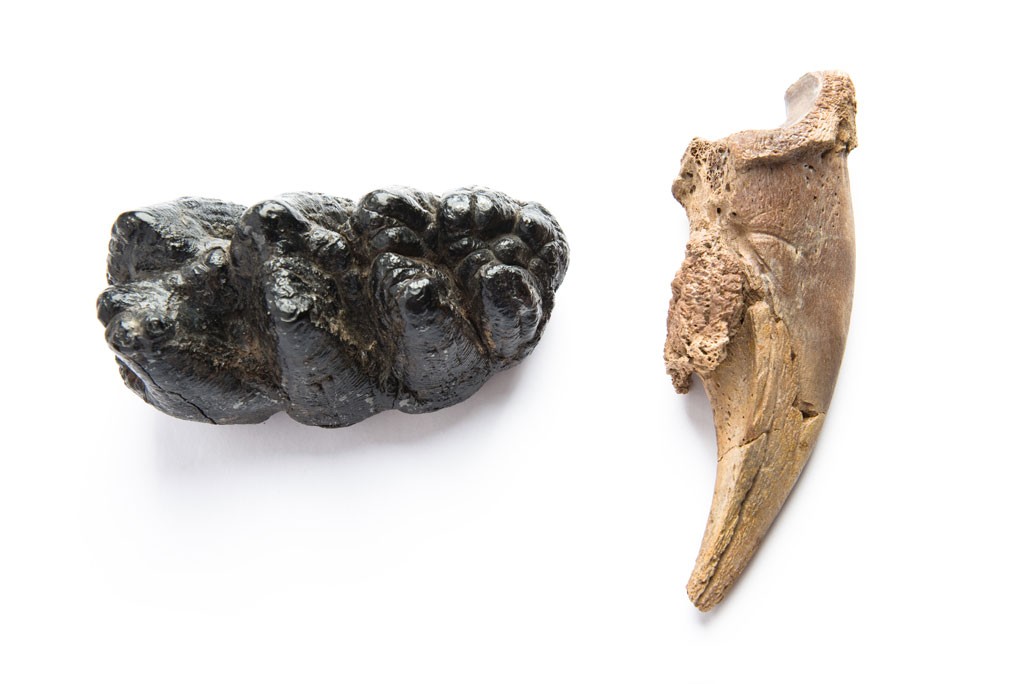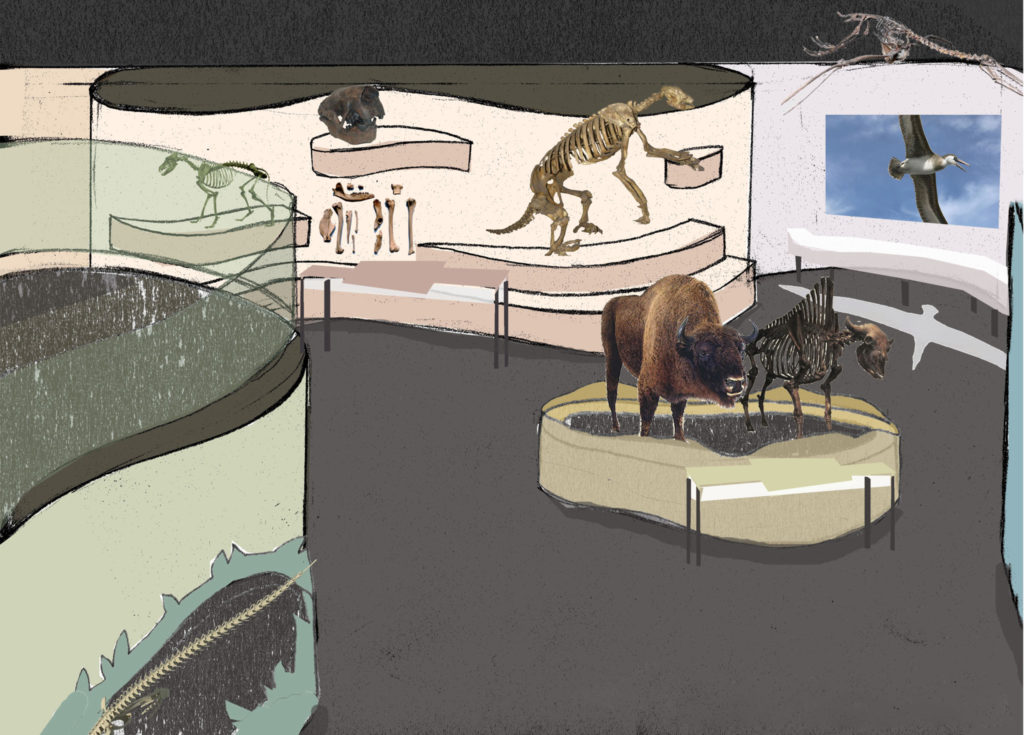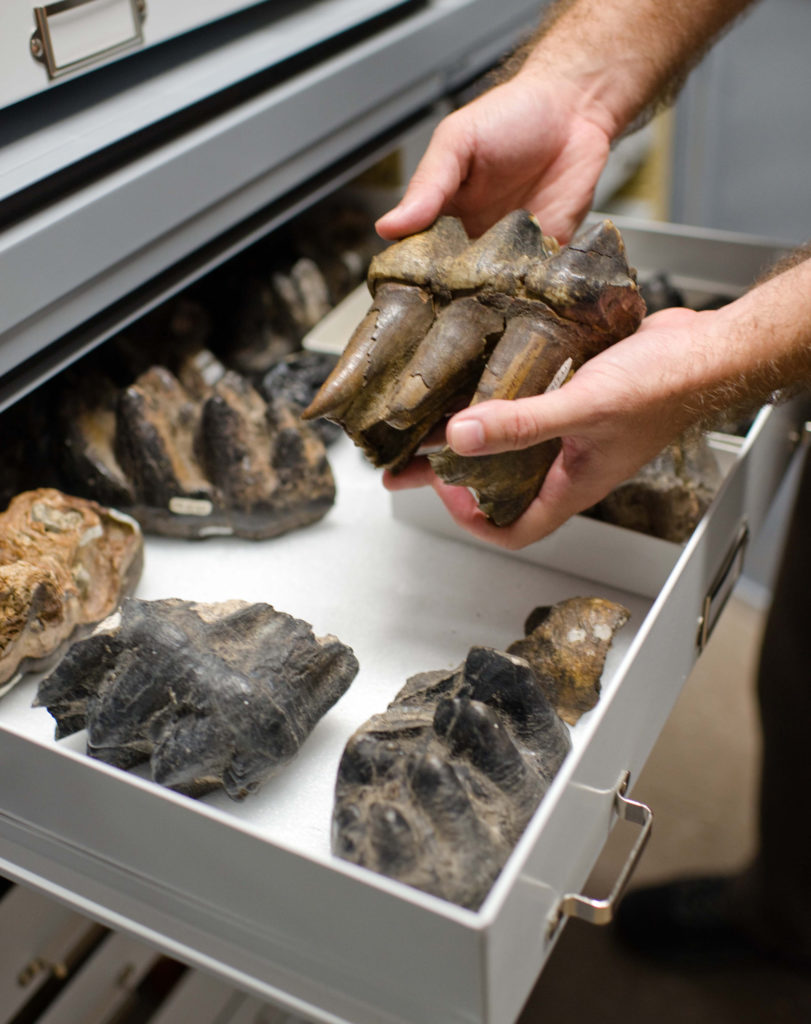Bringing Them Back to Life: The Pleistocene
Bringing Them Back to Life is a blog series from The Charleston Museum that provides updates and plans for our Natural History Gallery renovations.
In case you missed it, the Elemental gala, put on by our FANS (Friends and Needed Supporters) of The Charleston Museum last Friday, in support of the Natural History Gallery renovation project, was an outstanding success. A tremendous thank you goes out to all the FANS who invested so much time and effort into making this a fantastic evening for all. Since they formed, the FANS have devoted innumerable hours on behalf of the Museum in planning and putting on events such as Elemental and their wonderful fall picnics at the Dill Sanctuary. Their hard work has greatly benefited the Museum, its mission and its programs. Through their dedicated fundraising efforts, they have brought in over $200,000 for Museum projects. Children’s education has been an important goal for them, and they have regularly contributed to projects such as the Kidstory exhibit gallery, our Title I (low income) schools program, and upkeep of our camp facilities at the Dill Sanctuary. Appropriately, children’s education is a critical component of the planning and interpretation for the new Natural History Gallery. Without question, the FANS are an outstanding group of volunteers and key stakeholders in our Natural History Gallery renovation. We would be unable to accomplish this worthy endeavor and many of the other things that we do at the Museum without their wonderful assistance.
One of the key sections of the Natural History Gallery will be fossils from the Pleistocene, commonly known as the Ice Age. Although the Lowcountry was not covered in ice as was much of North America, the region was home to many of the animals that we associate with this era such as mammoths, mastodon, and saber tooth cats. Curator of Natural History Matt Gibson tells us much more:
The Pleistocene
The Pleistocene epoch (2.5 million to roughly 11,700 years ago) is commonly referred to as “The Ice Age”. Extended time periods of cold within an ice age are referred to as “glacials” or “glacial periods” and warmer periods are referred to as interglacials. During the Pleistocene, glaciers would have extended as far south as Ohio. The Lowcountry climate was drastically cooler and supported multitudes of unique extinct organisms. Examples include mammoths, mastodons, dire wolves, and giant ground sloths. Many of these animals migrated using land bridges, or tracts of land exposed by lower ocean levels.

With the renovation of the Natural History Hall, there will be a new section devoted to the Lowcountry Pleistocene fauna. The centerpiece will be a full reconstruction of the giant ground sloth Eremotherium. Eremotherium is the largest genus of ground sloth in the United States and is well represented in The Charleston Museum’s collections. Individuals of this behemoth have been excavated from John’s Island and Monck’s Corner. Other giant ground sloth groups have also been locally collected including Megalonyx and Paramylodon. All giant ground sloths were herbivorous, with some species preferring to graze while others ate leaves and twigs. The most striking feature of the giant ground sloths are their incredibly long foreclaws. These claws would have been used for stripping branches of their leaves or for digging for vegetation.



